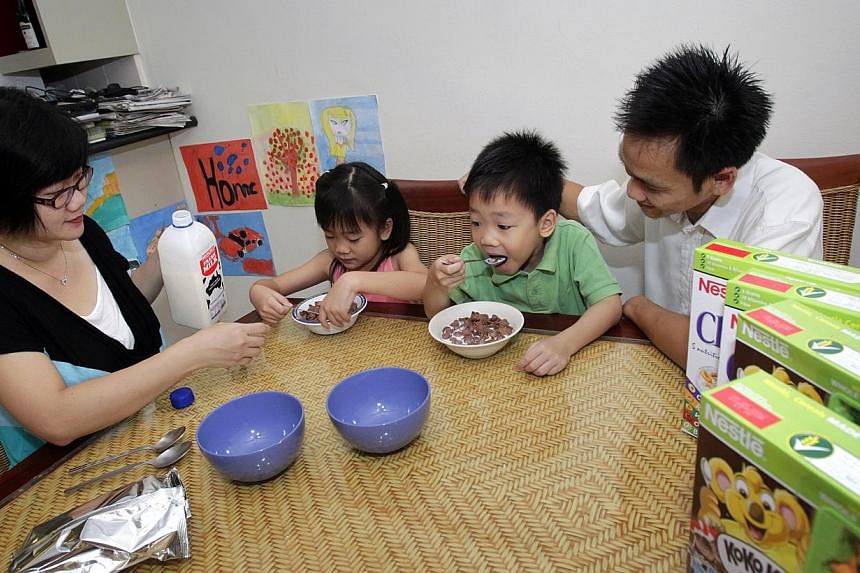Singaporeans are eating more whole grain foods.
More than one in four eat at least one serving of such foods a day, up from just one in 12 a decade ago, new Health Promotion Board (HPB) figures show.
The biggest increase has been in the higher consumption of whole grain breads, which now account for one in five loaves or buns bought.
Brown rice still lags behind, having only 3 per cent of the rice market share. But its popularity is fast rising with sales going up by 18 per cent a year.
Baker Gardenia, which has the lion's share of the pre-packed bread market, said its sales of whole grain products has been going up by about 15 per cent a year.
Eating whole grain rather than refined rice or wheat can reduce the risk of heart attacks, some cancers and diabetes. It is especially important for diabetics, as whole grains release sugar more slowly than refined carbohydrates, reducing the risk of a sugar spike.
Health authorities around the world encourage people to eat more whole grain rather than white bread or rice.
Ms Gladys Wong, chief dietitian at the Khoo Teck Puat Hospital and past president of the Singapore Nutrition and Dietetics Association, said: "Many people (mistakenly assume) that whole grains must be a chunky, gritty type of food, difficult to chew and swallow.
"But the health benefit is actually about eating the 'whole grain' in any texture form."
She said the health benefits come from the germ and bran which contain phytochemicals, antioxidants and plant sterols - the protective factors for cancer and anti-ageing.
Mr Wayne Soe, assistant marketing communications manager at Gardenia, attributes the increasing popularity of whole grain bread to its ability to grind the whole grain into super fine flour, which makes the bread soft and fluffy - almost like white bread, but with health benefits.
He said about 20 per cent of Gardenia's 65 types of bread sold daily are whole grain - 30 per cent more than five years ago.
In order to carry the HPB's Healthier Choice symbol, bread loaves need at least 25 per cent whole grain, while rice must have at least 20 per cent whole grain. Noodles need only 8 per cent, and buns 10 per cent.
HPB chief executive officer Zee Yoong Kang said a problem with pushing for higher whole grain content is that it "generally changes the appearance, texture and flavour of the food product".
Too much whole grain in noodles causes it to lose its "elasticity" and become brittle. Similarly, buns dry out faster because they are smaller than loaves, hence the decision to allow a lower level of whole grain in them.
Mr Zee said HPB's approach is "to cast our reach wide while keeping levels incremental so that consumers can accept whole grain".
He added that the amount of whole grain required will go up in time as food technology improves - as has already happened with bread, with whole grain content going up from 20 to 25 per cent.
Mr Soe said that with its fine textured flour, ground in-house, Gardenia bread's whole grain content is high. It's Super Soft and Fine bread is made from 100 per cent wholemeal.
However, Ms Wong pointed out that the downside of having more whole grain in bread is that more salt is needed when baking it, which could be bad for the heart.
facebook.com/ST.Salma

